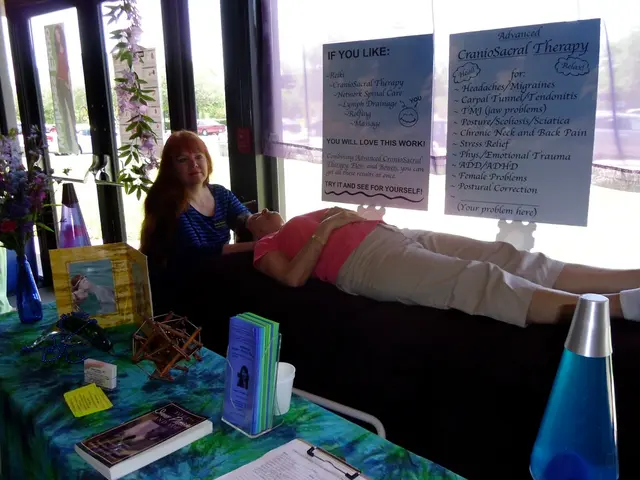Saxon region witnesses a surge in cancer cases since 2005 - Increase in skin cancer diagnoses observed in Saxony since 2005
Rising Skin Cancer Cases in Saxony: A Growing Concern and Prevention Measures
Skin cancer diagnoses in Saxony have been on the rise over the past two decades, according to the Barmer health insurance company. Notably, cases of melanoma have more than doubled, and non-melanoma skin cancer cases have tripled since 2005.
The increase has particularly affected the older age groups, with baby boomers seeing a significant rise in diagnoses. This escalation can be attributed to UV damage sustained during childhood and adolescence, which lingers throughout life.
Barmer's regional director, Monika Welfens, highlighted the issue, stating, "Severe sunburns in younger years leave lasting damage." The consequences of unguarded sunbathing or solarium use in the 1980s and 1990s are now coming to light, as more individuals in the affected age groups grow older. The skin, Welfens noted, "never forgets."
Moreover, the proportion of women diagnosed with melanoma in the 50-59 age group has doubled, compared to those born between 1946 and 1955. Men, however, are still more frequently diagnosed with both melanoma and non-melanoma skin cancers.
Skin cancer is one of the most common cancers in Saxony, with more diagnoses reported in 2023 for both men and women. As the population ages and life expectancy increases, Barmer anticipates the number of cases to continue rising. While men aged 70 and above have a significantly higher risk, those under 40, particularly those born after 1980, are at a lower risk.
The insurance company attributes this trend to a shift in the attitudes of younger generations, with parents becoming increasingly aware of the hazards of excessive sun exposure and solarium use. By adopting sun-protective measures, parents are helping safeguard their children and reduce the likelihood of future skin cancer cases.
Welfens recommends wearing high-SPF sunscreen, long-sleeved clothing, hats, and avoiding direct sunlight whenever possible. Regular skin checks are also vital for early detection of any potential problems. Regarding artificial UV radiation, such as that emitted by solariums, she advises against its use. "There's no such thing as a healthy tan," Welfens said.
Skin cancer prevention efforts can be further enhanced through public health initiatives and educational campaigns focusing on sun safety. The collaboration between local healthcare providers, educational institutions, and community organizations can contribute to a culture of early detection and sun protection in Saxony.
- The rise in skin cancer cases in Saxony, particularly among older age groups, can be linked to vocational training in the 1980s and 1990s, as severe sunburns during those years can leave lasting damage.
- To combat the growing concern of skin cancer, public health initiatives and educational campaigns, focusing on science, health-and-wellness, and fitness-and-exercise, should emphasize sun safety and the importance of early detection.
- In the context of mental-health, understanding and addressing the risks associated with medical-conditions like skin cancer can promote overall wellness and self-care.
- Nutrition plays a crucial role in maintaining healthy skin, and a balanced diet rich in essential vitamins and minerals can support the body's defense against skin cancer.








